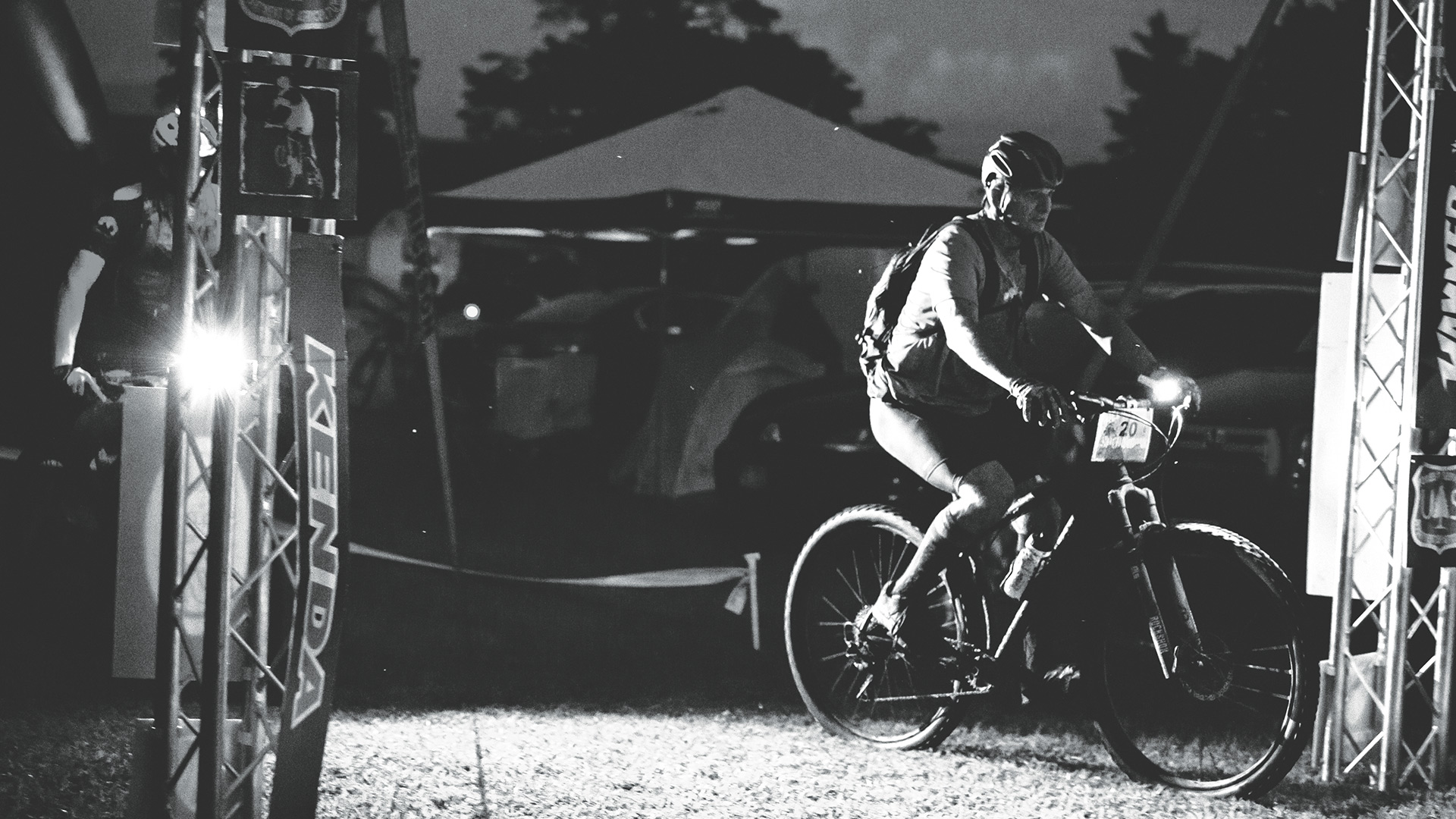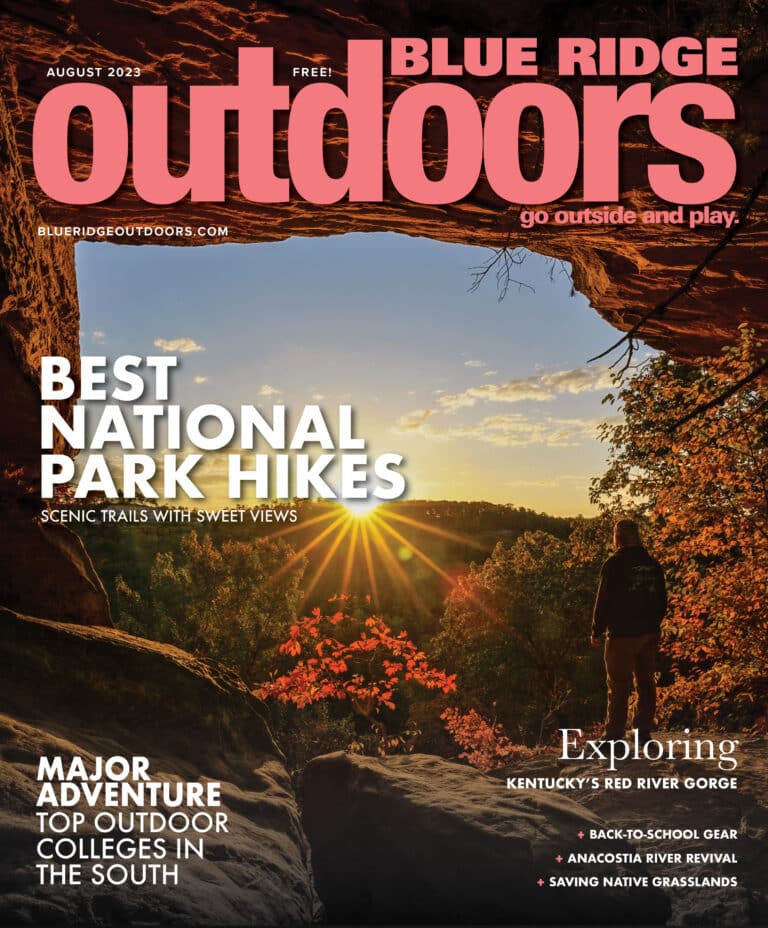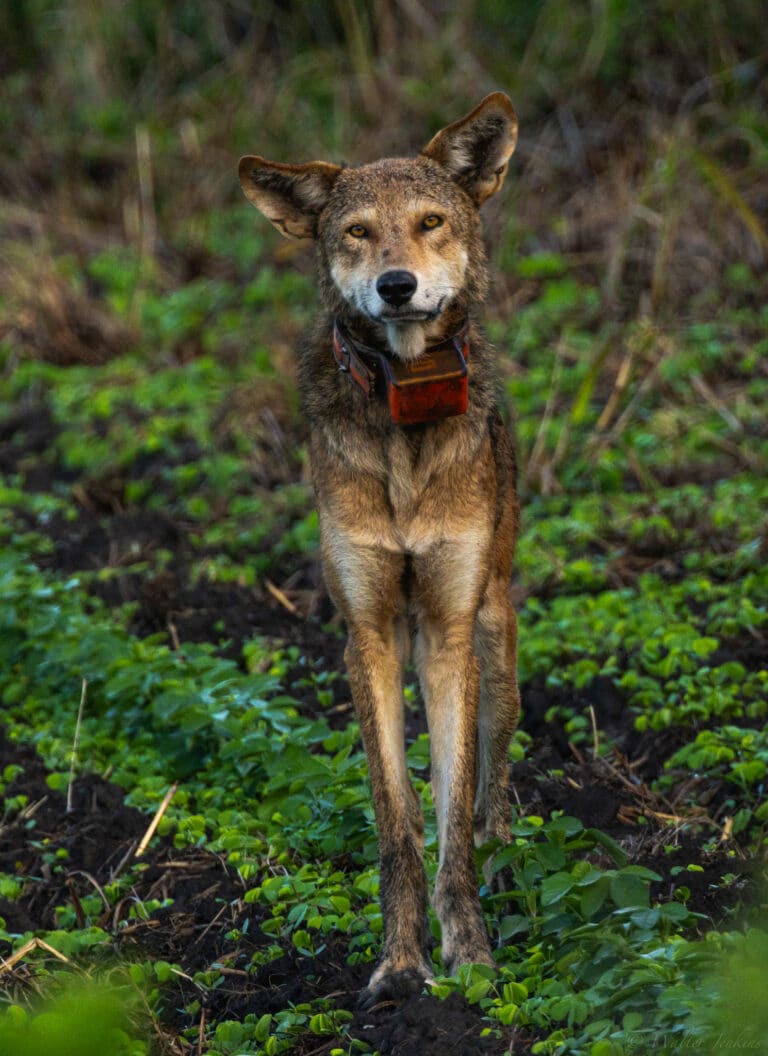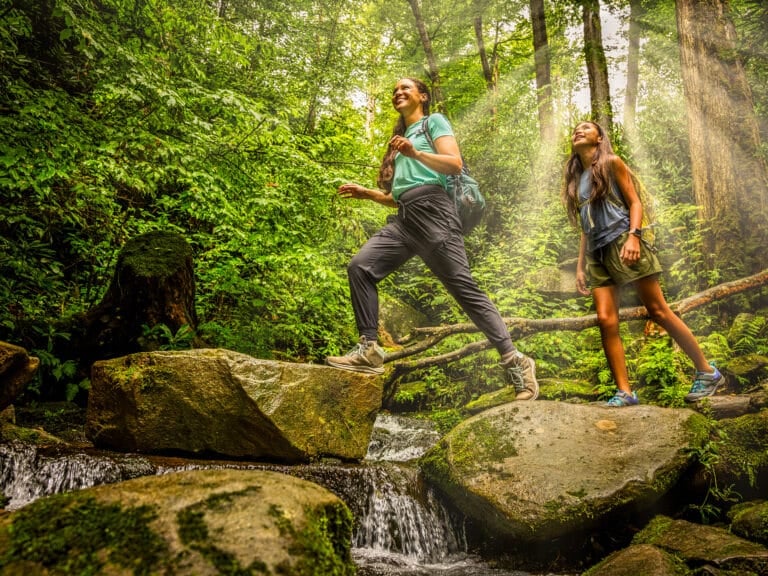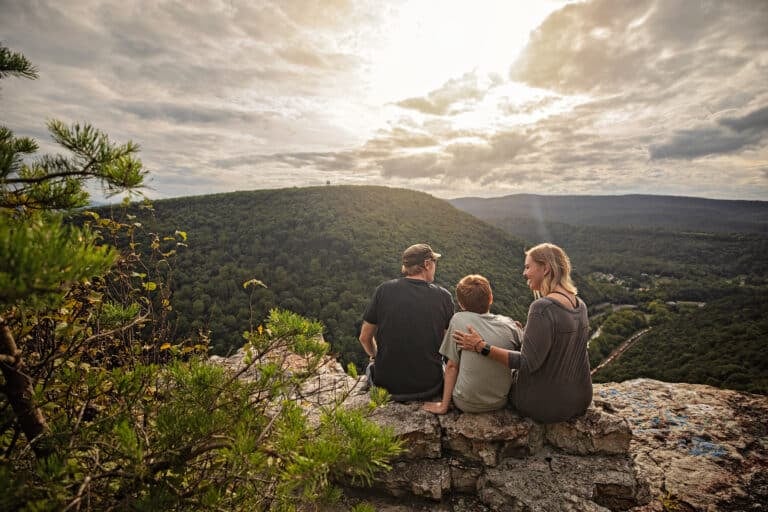Gonnnng. Gonnnng. Mallet in hand, Shenandoah Mountain 100 race director Chris Scott pounds on a gong swinging from his handlebars at 5 a.m. Within minutes, the quiet campground is abuzz with the click-click-click of riders piddling with shifters and preparing to race. Among them is Larry Camp, attempting to complete his 20th Shenandoah Mountain 100 ride.
Back in 1999, the first year of the “SM100,” Hurricane Dennis dumped 10 inches of rain on Stokesville the weekend of the race. For the first and only time in the SM100’s history, Scott was forced to postpone for a month.
The following year wasn’t any better. Heavy rains caused the area rivers to swell so much that the course was rerouted to avoid high water. Even then, normally benign creek crossings surged above the racers’ waists.
For over a decade, the rain seemed to be the worst of the race’s problems. But in 2015, a Long Island-area mountain biker died after crashing into a tree while descending Braley Pond. The tragedy floored the entire mountain bike community, and since then, Scott has stepped up race day safety procedures and nearly doubled the number of mobile medics on hand.
Like the course itself, which has nearly 12,000 feet of climbing, the event has had plenty of “ups” too. Within the last decade, a half-million dollars has been invested in improving National Forest trails.
Elite riders like Jeff Schalk, Chris Eatough, Ben King, and Jeremiah Bishop have tackled SM100. Bishop has won it nine times. Sue Haywood, another former Harrisonburg local, topped the podium seven times.
But more telling of the SM100 spirit is another streak made not by any sponsored athlete but a Pennsylvania GIS cartographer who showed up in 1999 on a steel rigid frame Fat Chance and has come back every year since—55-year-old Larry Camp.
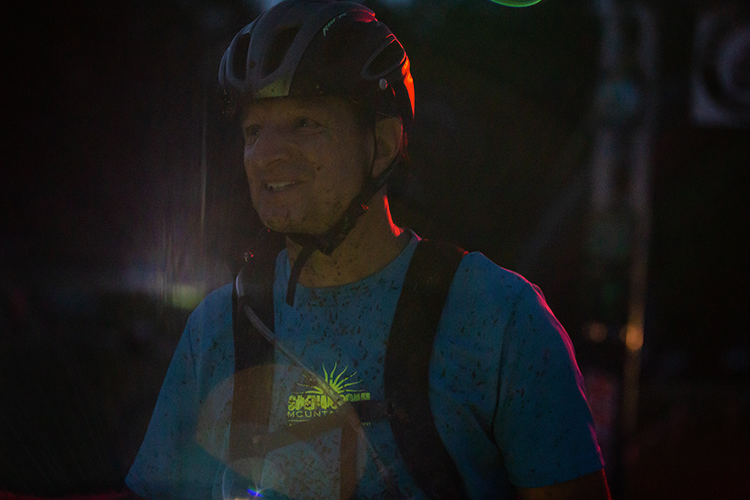
Meet Larry
Like many riders in the Mid-Atlantic, Larry Camp got his start racing at the 24 Hours of Canaan in Davis, W.Va., during the mid-1980s. Strong and light-hearted, Camp had a natural knack for crushing big days in the mountains.
“Larry was a core part of that backcountry tribe,” says Scott. “20 years ago he was one of the regulars. He was the kinda guy you could always count on in the backcountry, a good, solid, steady-riding dude who’s always got his permagrin on.”
Prior to the inaugural SM100, then 35-year-old Camp had DNFed at a number of 100Ks, but he was determined to finish Scott’s race. Born and raised in northern Virginia, Camp rode often in the George Washington National Forest where the race is held.
“There are so many reasons to quit,” says Camp. “Something that hurts at 8:30 in the morning, well, get over it, because there are going to be three other things that hurt before noon. You gotta just accept that.”
Camp powered through, finishing in the middle of the pack for the first few years. In 2003, weary of stressing over mechanicals, Camp raced on a singlespeed and finished just shy of 10 hours, his fastest time ever. He continued singlespeeding for a decade, continuing to ride a steel hardtail even as bike technology advanced and full-suspension bikes became standard.
When he crossed the finish line in 2017 he was ready to call his streak quits. He’d never been out to set one anyway, showing up more out of habit than anything else. In 19 years of racing the SM100, Camp had experienced nearly every mishap short of a broken bone—busted derailleurs, shot shifters, a heinous bout of the stomach flu.
“When I crossed the finish line last year, Chris said, ‘You’re on the buy 19-get-one-free deal. Next year is on me,’” says Camp. “I said, ‘No way. I’m done.’ But I came around. I don’t have the fitness I used to have, but I can get through on stubbornness alone.”
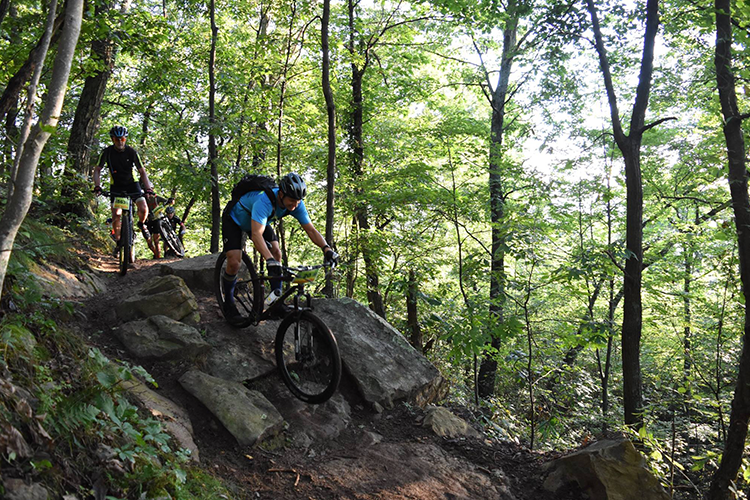
Passing Of The Torch
Dawn is just beginning to break when the starting field of some 500 riders peels out of Stokesville Campground. The skies are clear but recent rains have swamped most of the course. Temperatures quickly soar into the 80s, cooking riders on their first 2,000-foot climb of the day.
By mid-morning, it’s clear that the 20th running of the SM100 is destined to be exciting. Jeremiah Bishop is the first to bust down Wolf Ridge, but the up-and-coming 20-year-old Eddie Anderson is hot on his wheel.
For Camp, the pace is much slower. Now 56, he’s like the Benjamin Button of biking—these days, he says cross-country rides don’t appeal to him nearly as much as BMX and downhill bike parks. He’s even considered buying a full-suspension bike, though he’s still rocking a steel hardtail for his last SM100.
He hasn’t trained much in the months leading up to today and he starts to feel it on the notorious “Death Climb.” Clouds darken the sky as he reaches the highest point on the course. Lightning flashes around him. Alone and exhausted, Camp digs deep as the rain starts to pour.
Then, it gets dark. For the first time in 20 years, Camp has to use the lights he stashes in his drop bag at aid station 5. Over 14 hours after starting, he cruises into Stokesville Campground, exhausted but still wearing his permagrin.
“I’ve always said, when I start needing lights, that’s when I should stop doing it,” says Camp. “I don’t want to disrespect my friends who do finish with lights, but I’ve sat in that pavilion many times watching people come in soaked in the dark and thinking I don’t want to do that. This time I needed a light. That’s telling me it’s a good time to quit. The podium is not getting any closer.”
To celebrate his 20th SM100, Scott has a fitting gift for Camp, a handmade map of the SM100 course.
“Larry would not have been the first guy that I thought would have done it,” says Scott of the 20-year streak, “but it’s people like Larry and the overall enthusiasm of the local community that make this one of the best events out there.”
In a way, the 20th anniversary of the SM100 feels like a proper passing of the torch. Eddie Anderson crossed the finish line over 15 minutes ahead of Jeremiah Bishop, becoming the youngest person to win the SM100.
Camp is content to return in 2019 as a volunteer. He says his services would be most useful at aid station 4 where the Death Climb begins.
“I still want to come back, next time to help motivate others to keep going. It’s hard as hell, but that last mile makes you forget an awful lot.”
